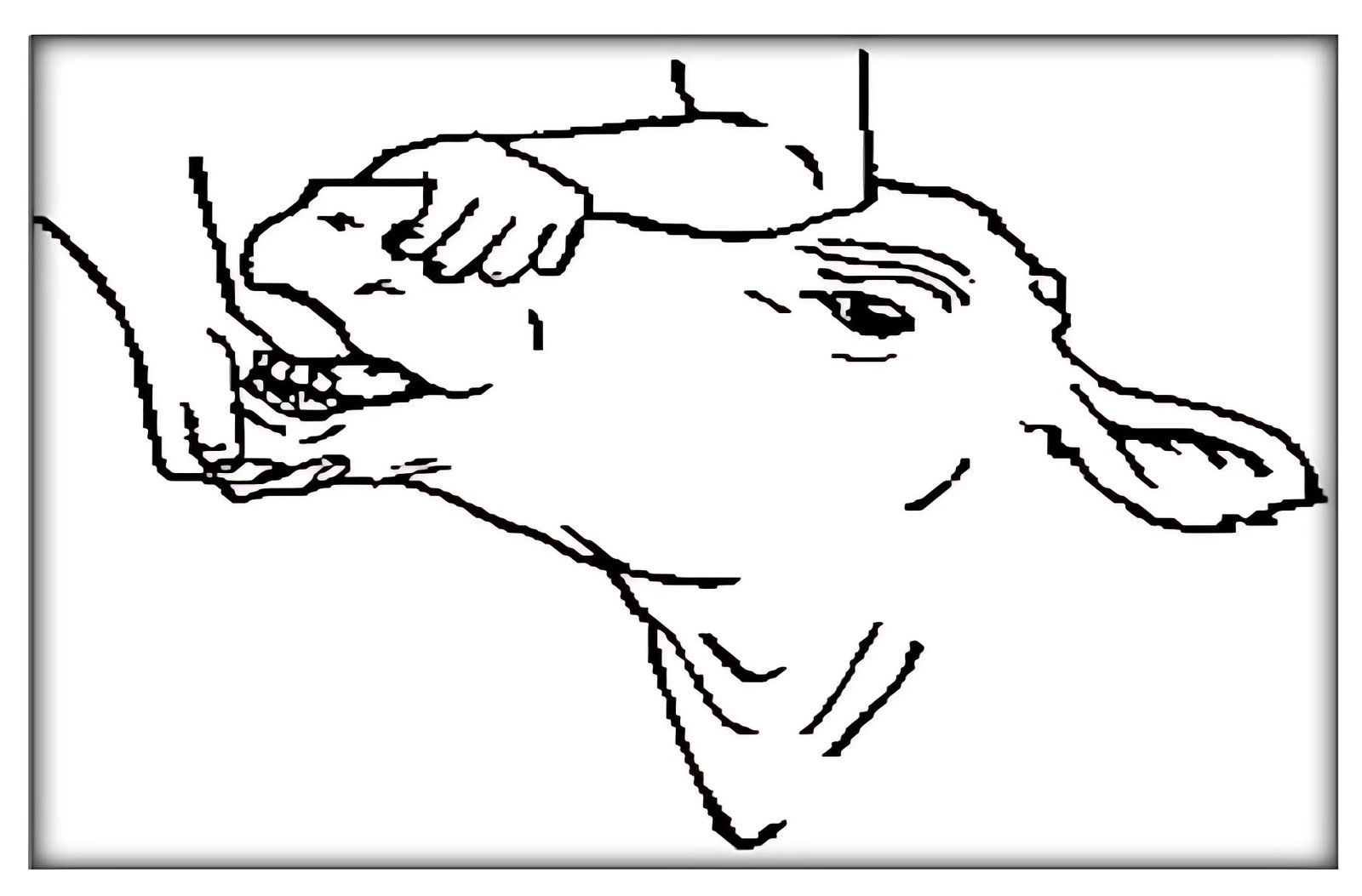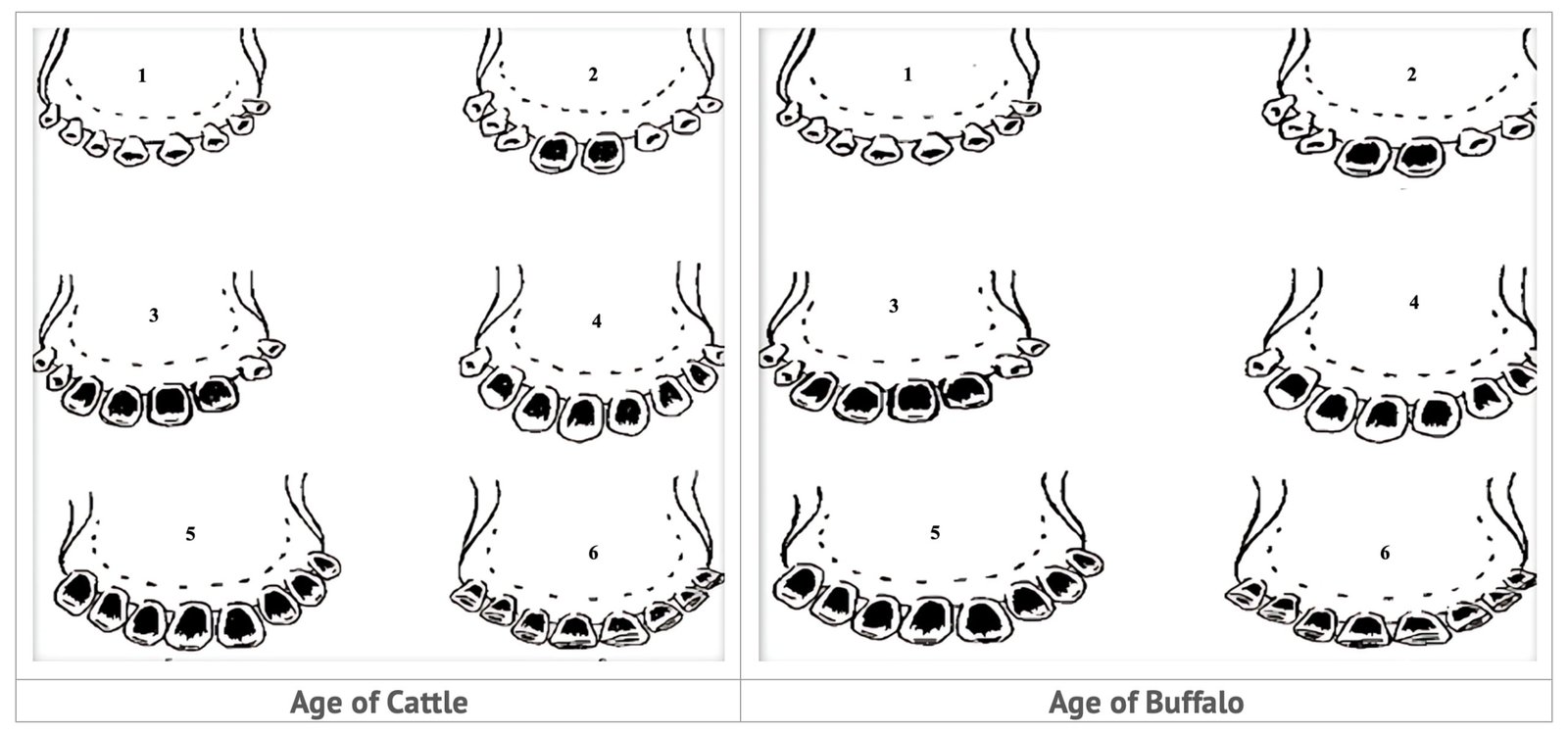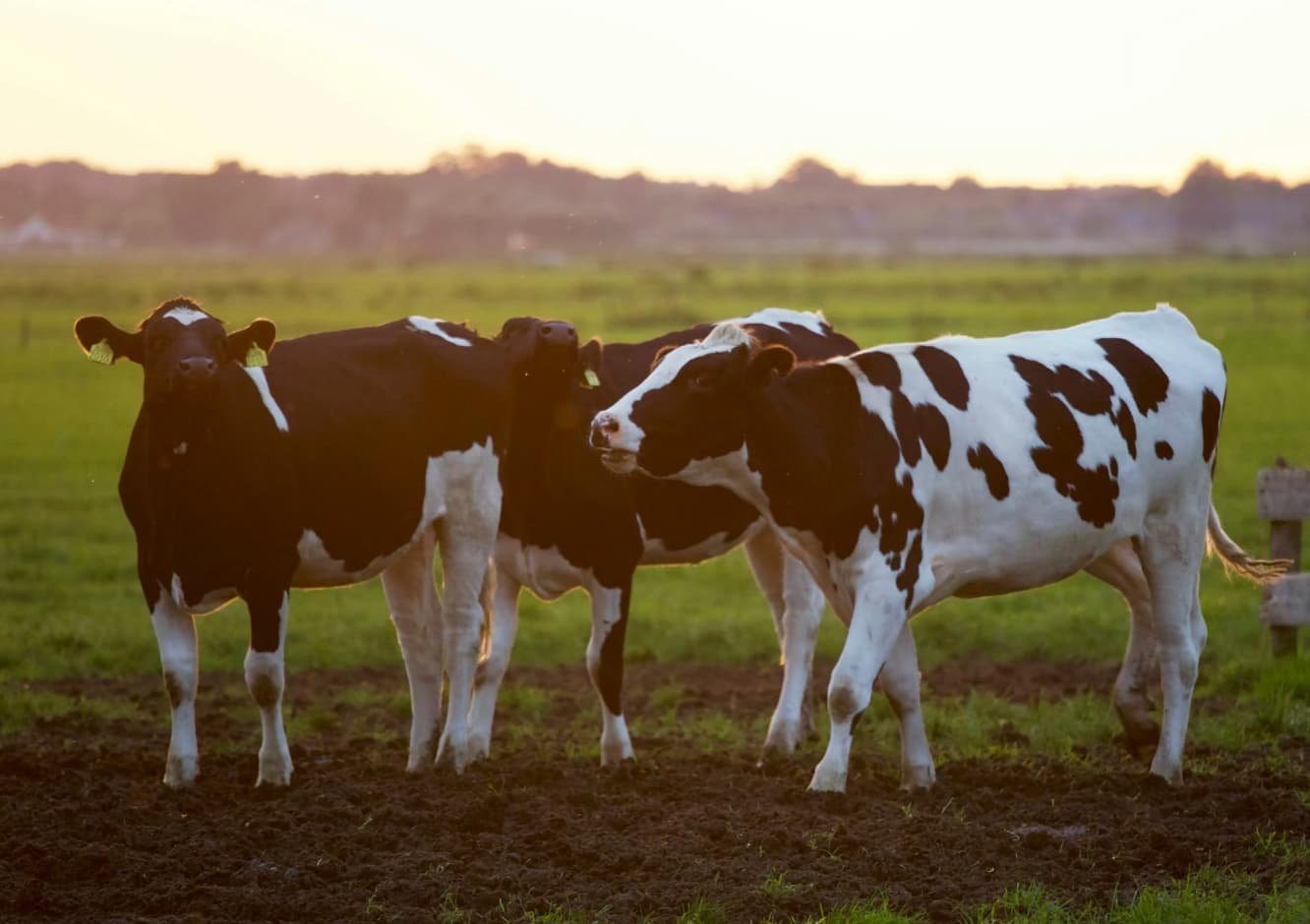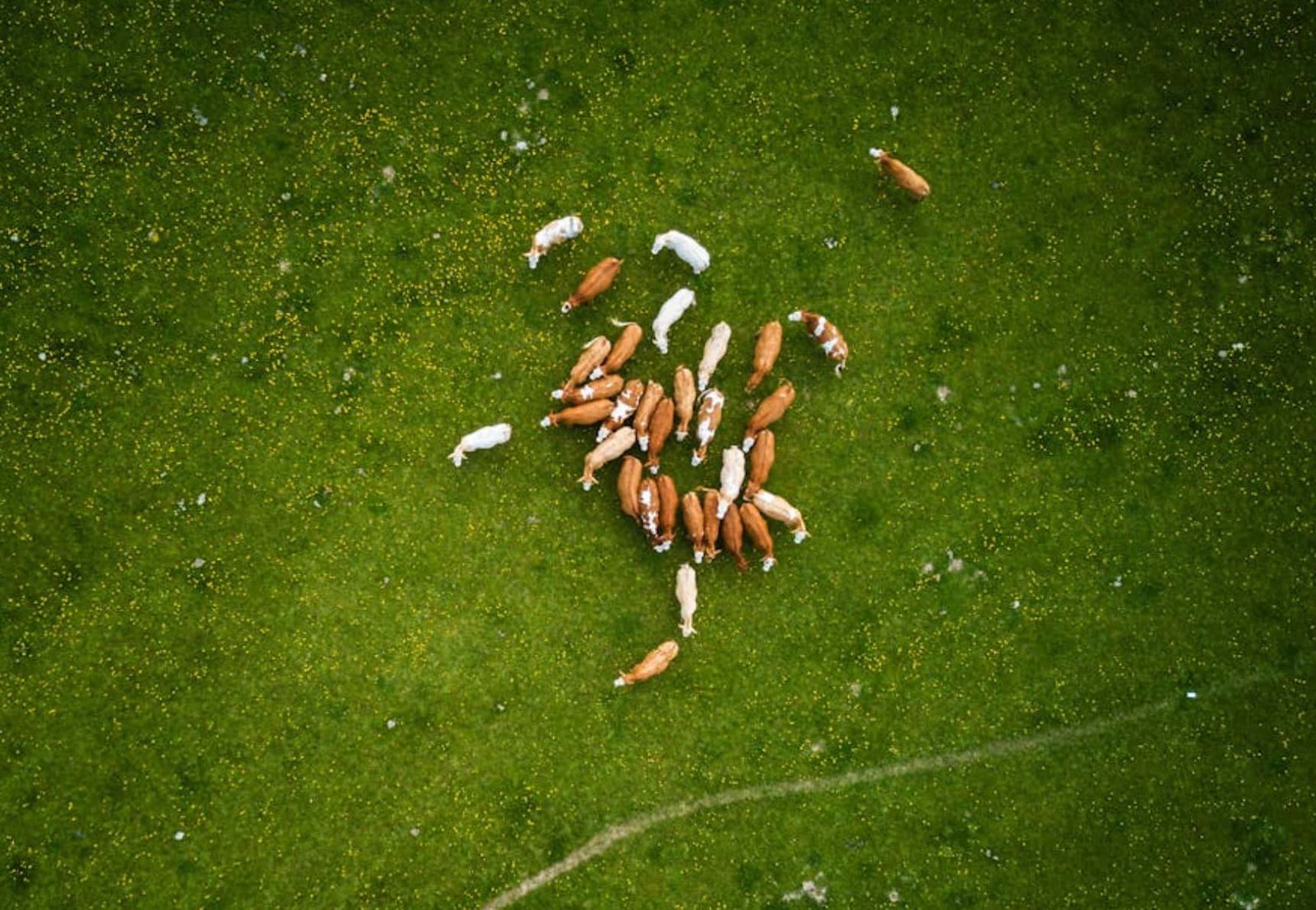CONTENT
Dentition in Cattle and Buffaloes: Dental Formula and Age Estimation
Dentition in Cattle and Buffaloes refers to the study and understanding of the types, number, and arrangement of teeth in cattle and buffaloes (dentition), along with how these dental characteristics change with age.
This knowledge is used to determine the dental formula—a standardized expression of the number of different types of teeth—and to estimate the age of the animals based on tooth eruption, replacement, and wear patterns.
The age of an animal can be estimated from the date of birth available in registers or by:
- Dentition
- Horn rings
- Number of young ones produced by the animal
The age of animals like cows and buffaloes can be estimated by noting the structure and conformation of the teeth. Ageing is important for the following reasons:
- To issue a soundness certificate
- To select and purchase livestock
- To know the breeding status of the animal
- To estimate the value of the animal
Dental Formula
Temporary dentition: 0/4 0/0 3/3 0/0
Permanent dentition: 0/4 0/0 3/3 3/3
- At birth: Calves are usually found to have their 8 incisors and 3 premolars of the temporary dentition easily palpable below the gums.
- At 1 month: The 8 temporary incisors have their crowns free from the gums, and the teeth are quite prominent and well defined. The three temporary molars are well up and wearing.
- At 6 months: The teeth are well placed in the jaw and are no longer overlapping.
- At 1 year: The most marked change between this time and 6 months of age is the wear of the temporary incisors.
- At 2 years: The first pair of permanent central incisors replace the corresponding temporaries, and the first and second molars push out the temporaries and cut through the gums.
- At 2½–3 years: The second pair of permanent medial incisors replace the corresponding temporaries.
- At 3–3½ years: The third pair of permanent lateral incisors replace the corresponding temporaries.
- At 4 years: The last pair of permanent corner incisors replace the corresponding temporaries.
- At 4–5 years: The teeth are slightly worn along their cutting edges, and they occupy a less crowded position.
- At about 6 years: The surface of wear has reached practically halfway across the upper surface of the teeth, and a portion of the root is exposed.
- At 10 years: The greater part of the crowns has worn from the teeth, and only a little cup-shaped piece of enamel remains.
- At about 12–14 years: Only the stumps of the teeth remain.
In horned breeds of cattle, a rough estimate of age can usually be made by counting the number of rings around the bases of the horns. The first ring appears at about 2 years, and thereafter one ring is added annually.

Age Estimation by Dentition in Cattle and Buffalo
Age estimation by dentition in cattle and buffalo involves observing the eruption, replacement, and wear patterns of teeth—particularly the incisors—to determine the approximate age of the animal with reasonable accuracy.
Age of Cattle
- Under two years old (no permanent teeth)
- Two years three months (2 permanent teeth)
- Three years old (4 permanent teeth)
- Three years six months (6 permanent teeth)
- Four years (8 permanent teeth)
- Old animal, over four years old
Age of Buffalo
- Under three years old (no permanent teeth)
- Two years six months (2 permanent teeth)
- Three years six months (4 permanent teeth)
- Four years six months (6 permanent teeth)
- Five to six years (8 permanent teeth)
- Old animal


